
Fresh Rolls and Salads in Hue Vietnam
The
Nguyen lords, the feudal dynasty that ruled from Hue and dominated much of
southern Vietnam from the 16th to 19th centuries, chose their capital wisely.
On the banks of the effortlessly evocative Suong Huong (Perfume River) they constructed
a Citadel and a lavish oriental wonderland of tombs, temples and palaces, which
stand testament to the dynasty’s lofty sense of aesthetics and its equally
towering arrogance and disconnection with its humble subjects.
Yet
these often-haughty monarchs didn’t just leave (admittedly attractive)
architectural tokens of their reign. They also helped bequeath upon Hue an
indigenous cuisine that is envied around the country.
“From
the middle of the 1600s until 1945, nine lords and 13 emperors ruled from Hue,”
says Phan Trong Minh, general manager at La Residence, the city’s most
illustrious hotel. “These rulers were finicky eaters. They wouldn’t settle for
the same humble dish day after day. And so the cooks of Hue had to get
creative. Really creative. It’s said that the emperors wanted 50 different
dishes served at a single sitting.
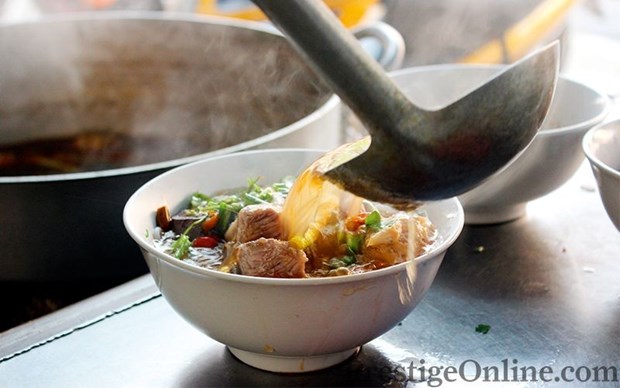
Pouring a bowl of Bun Hue
“The
legends also tell stories of incentives the emperors provided for creativity.
They would often let his concubines compete for their favour with the
preparation of dessert. Whoever produced the most delicious dessert could have
the emperor for the night!”
Times
have changed a lot in Hue since then. The emperors are long gone and the focus
of power and commerce has shifted north and south to Hanoi and Ho Chi Minh
City, respectively. The legacy of royalty, however, is easily detected in the
city’s discerning dining habits.
In
Hue, like elsewhere in Vietnam, the locals like to get the day in gear
sharpish. Indeed, the hour errs towards the ungodly side as I make my way over
the Song Huong in search of an early breakfast. Despite the time, the city is
already a hive of activity.
A
rowdy succession of motorbikes emerges from the dawn mist that hangs like a
heavy grey curtain over the river. The streets bordering the city’s famous
citadel, meanwhile, overflow with vendors tending steaming cauldrons of bun bo
Hue (a hearty beef noodle soup that is one of the city’s defining dishes) and
wizened old ladies practicing their tai chi moves.
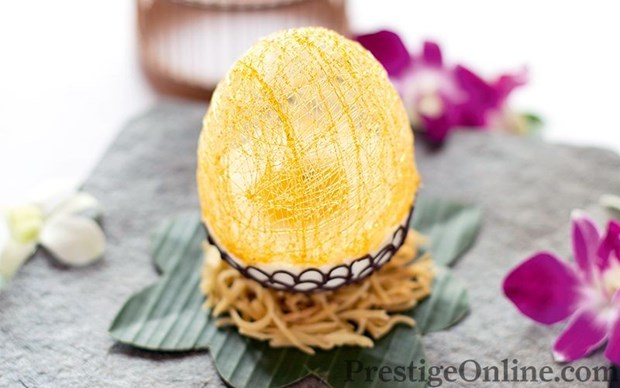
Sweet Egg nest
In
a large plaza next to the citadel a group of young boys, kitted out in Brazil
soccer shirts, are kicking a football around. The bright yellow shirts may
appear incongruous given the grimy state of the weather. But the scene is a
fitting metaphor for the city’s multi-faceted culinary scene.
Despite
recent travails of its national side, Brazil is still a byword for an
effortless, flair-filled version of the “beautiful game”. Similarly, Hue is
widely regarded as the apogee of Vietnam’s food culture: a place where prime
produce, a fastidious royal heritage and some of the best dishes in the country
combine to create something truly world-beating.
Food
is the only reason I’m up so early and not still snoozing in my comfortable bed
back at the art deco La Residence Hue Hotel & Spa, Hue’s most prestigious
address. I’m acting on a hot tip from Andrea Nguyen, author of numerous books
on Vietnamese cuisine.
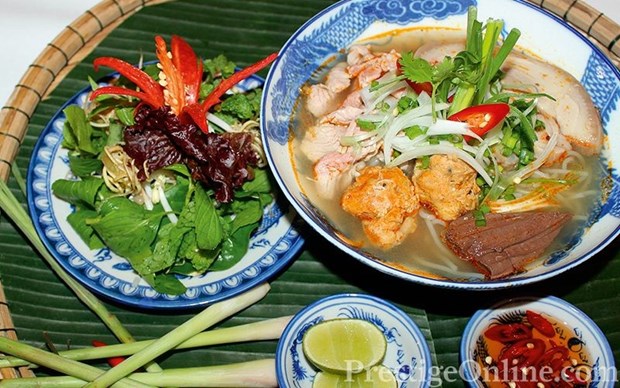
Bun Bo
Upon
quizzing her on her preferred breakfast options in Hue, she points me in the
direction of her favourite spot for bun bo (beef and pork with chili,
lemongrass and thick, round rice noodles). The vendor packs up by 9am and is
often sold out earlier than that. Therefore, it is with some relief that I find
myself tucking into a dish that many view as defining its home city.
“Pho
is nuanced and delicate, a reflection of its origins in and around Hanoi,” says
Nguyen. “Bun bo Hue is gutsy and earthy like the strong-willed people of its
namesake city. A breakfast of bun bo Hue is a brow wiper. It awakens your
senses and fortifies you like no other Vietnamese noodle soup.”
It’s
a potent start to the day, but its sense of power is somehow in keeping with
the former imperial capital’s regal lineage.
It
wasn’t all about extravagant banquets and concubine cook-offs during the
imperial era. As well as being the royal centre of Vietnam, Hue was also the
country’s spiritual nexus. Its status as a hub for Buddhism led to the
expansion of vegetarian cuisine. Hue chefs are known for their skill with
vegetarian dishes to this day, often incorporating ingredients such as tofu and
soy and mung beans to replicate meat-based dishes.
“When
I think about Hue cuisine, I think of two things — royal cuisine and more
complex vegetarian dishes,” says Tracey Lister, author of the book Vietnamese
Street Food. “Hue continues to be a Buddhist centre and some of the best
vegetarian food in Vietnam is still found there.”
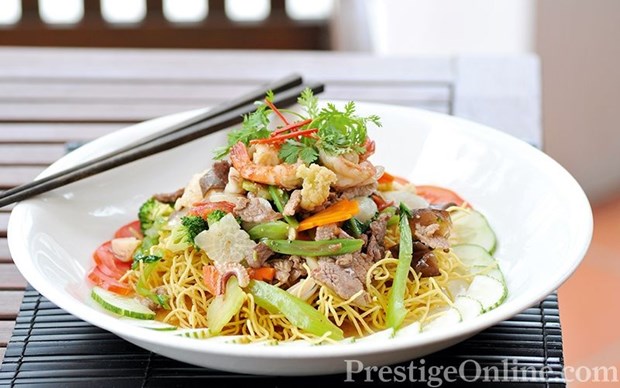
Crispy Egg Noodles
One
emperor in particular is given much of the credit for Hue’s emergence as a
culinary powerhouse. Tu Duc certainly had his flaws — he was notoriously
narcissistic and an unashamed womaniser (he had 104 wives and many more
concubines). He was, nevertheless, a man of exquisite taste and a difficult guy
to please. He apparently demanded a different meal every day for a year: a
tough task for even the most innovative kitchen team.
His
legacy, though, is writ large on Hue’s contemporary culinary scene. Dining
highlights in the city range from Imperial cuisine — a succession of dainty
dishes served up at lavish multi-course banquets — to creations that leaked out
of the gilded royal kitchens to achieve mass popularity with locals.
There’s
virtually nothing left of the once-magnificent Forbidden Purple City, a citadel
within a citadel where pampered royals and their courtiers and concubines
luxuriated away from the peasants. Imperial cuisine, however, is kept alive in
plush hotels and upscale restaurants where the exactitude of the Nguyen era is
recreated for contemporary guests.
At
La Residence the main dining room takes its visual cues from the peak years of
Imperial pomp. It is decked out with red and gold fabrics adorned with
calligraphy. Guests are seated in ornate high-backed chairs inscribed with
dragon etchings. The food is equally ostentatious. Fruit and vegetables are
painstakingly carved to resemble birds such as swans and peacocks and
surrounded with delicate morsels such a deep-fried prawn with young rice and
beef in la lot (wild betel) leaves.
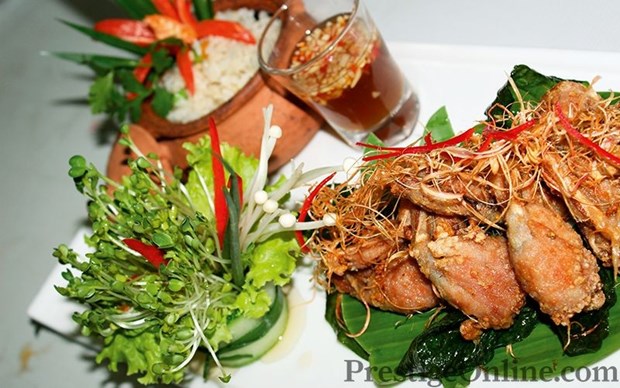
Deep Fried Vietnamese Frog Legs with Lemon Le
It
is all suitably sumptuous, and is a fitting calling card for a property that
remains one of Vietnam’s finest. Hue’s inherent elegance is showcased at La
Residence, which offers a fusion of Francophone colonial chic and Asian
exoticism. Located on the southern bank of the Perfume River, this former
residence of the French governor is one of the finest examples of art deco
architecture in the tropics. Inside it is equally resplendent. Two additional
wings were added to the original mansion in 2005, and the renovation has imbued
additional grandeur to the hotel’s already heady Indochinese ambience.
Although
the dining options at La Residence are sublime, I’m equally happy to take to
the streets to get to the heart of Hue’s tremendous food culture. After filling
up at breakfast, it takes me a while to work up an appetite. After climbing the
vertiginous steps at the Thien Mu Pagoda near the Perfume River, I am ready to
eat again.
I
do so with gusto at Bun Thit Nuong Huyen Anh, which specialises (the clue is almost
always in the name in Vietnam) in bun thit nuong (cold rice vermicelli noodles
topped with grilled pork, fresh herbs and lettuce).
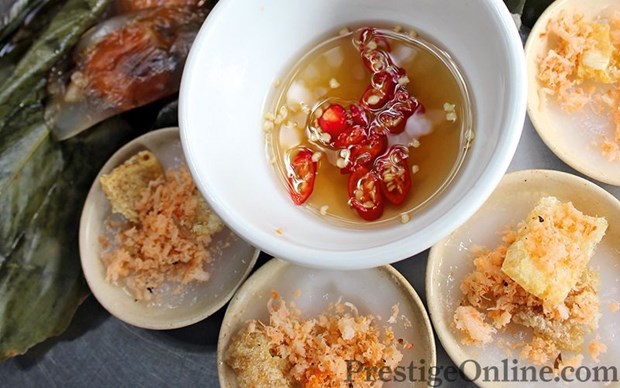
Banh Beo (steamed rice cakes topped with dried shrimp, pork crackling, shallots and herbs)
Further
encouragement to dine arrives courtesy of a food tour organised by La
Residence. I am whizzed between local restaurants to sample iconic local
specialties such as banh khoai (pan fried crepe stuffed with shrimp and pork
belly), banh beo (steamed rice cakes, about the size of a silver dollar topped
with dried shrimp, pork crackling, shallots and herbs and served with a
slightly sweetened fish sauce) and com hen (rice with fresh herbs and baby
mussels).
As
I sit in one venue carefully assembling a rice paper roll consisting of herbs,
fruit and salad leaves and nem lui (charcoal grilled pork and beef formed
around lemongrass stalks), I ask my guide Lan about her future plans. Only 21,
with perfect English and a wicked sense of humour, she seems like an obvious
candidate for a move to the brighter lights of Hanoi or Ho Chi Minh City. She,
however, has other ideas.
“I’ll
stay here forever,” she laughs without missing a beat. “I couldn’t live without
the food. You can get Hue cuisine elsewhere in Vietnam, but it never tastes
quite the same as it does here.”
Lan’s
opinion is commonly voiced in Hue. It is a sentiment, I suspect, that would
have met with the approval of the gastronomes that once ran the show from this
part of Vietnam.
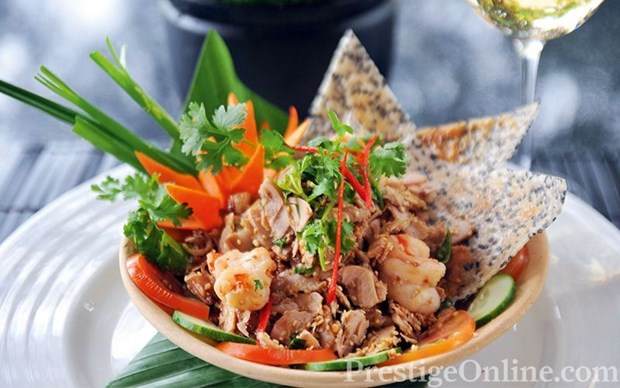
Young Fig Salad
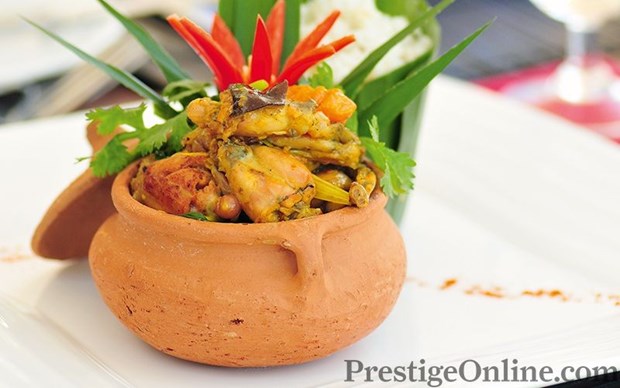
Spicy Vietnamese Frog Leg

Sweet Lotus Seed Soup
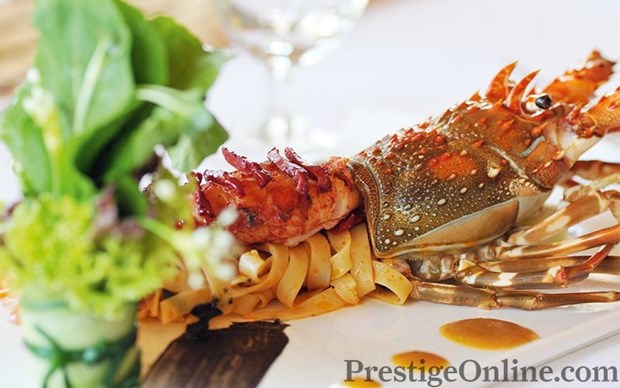
Roasted Lobster Marinated With Spiny Bitter Gourd
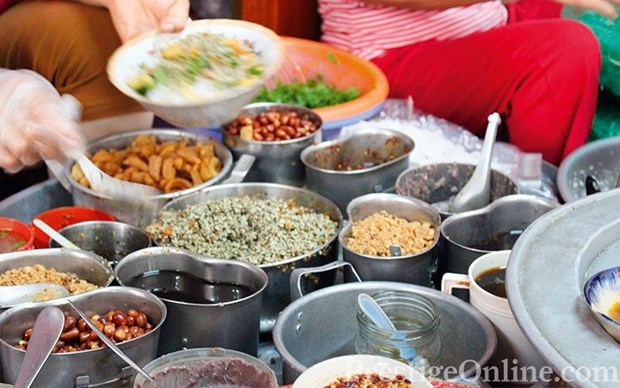
Street Food in Hue
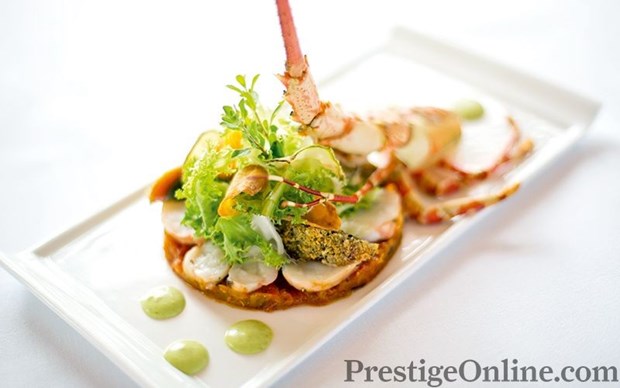
Roster Lobster Thyme Marinated Salad, Tomato and Phan Thiet
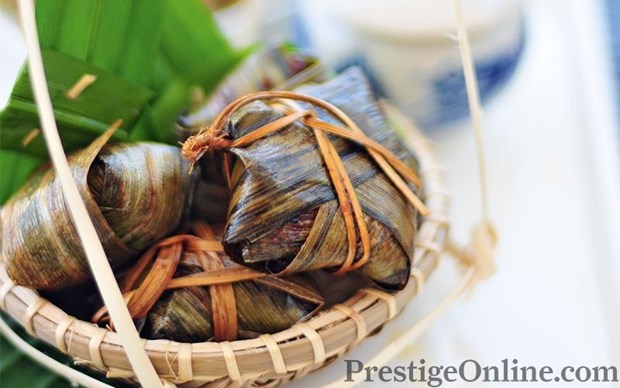
Deep Fried Chicken
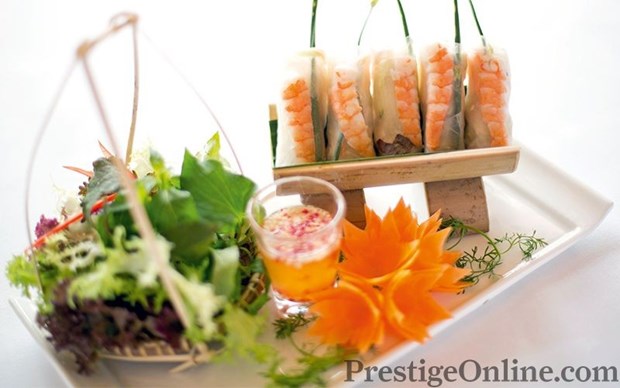
Fresh Spring Rolls with Galangal Marinated Poached Praw
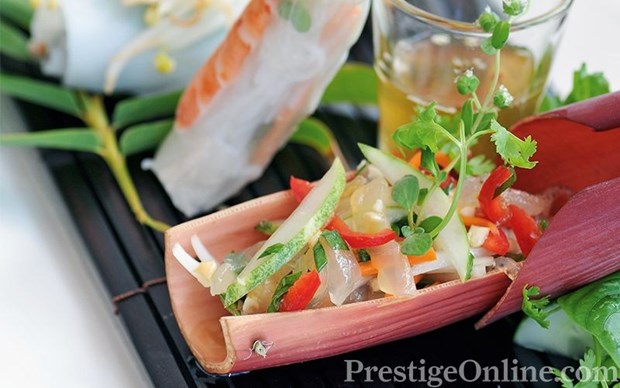
Vietnamese Tapas
By Duncan
Forgan/ Prestige
Online